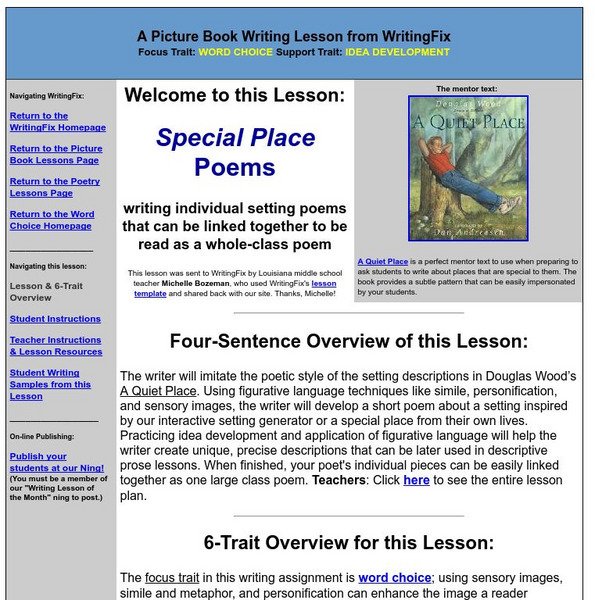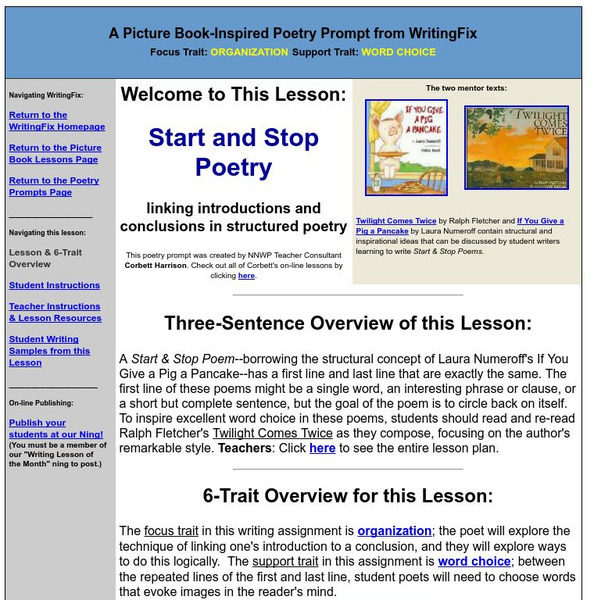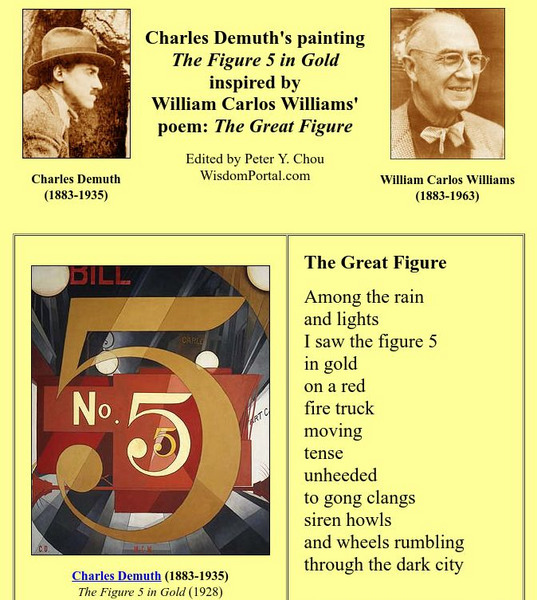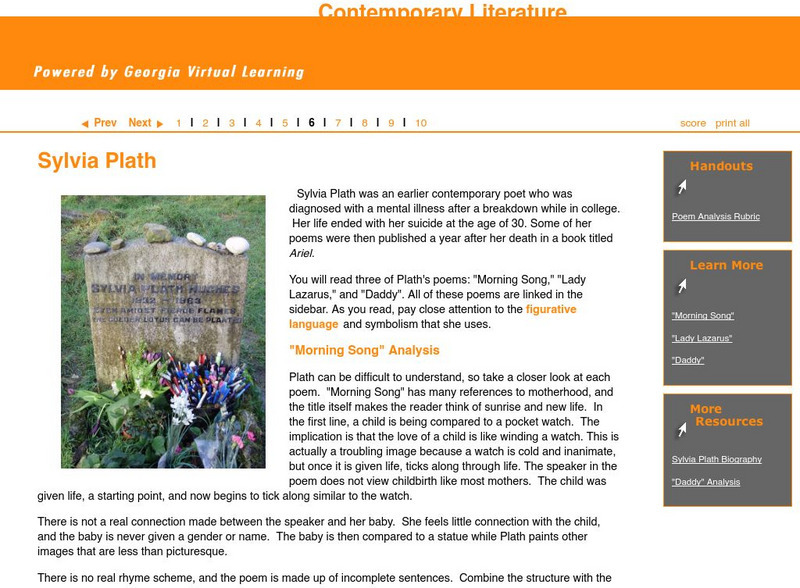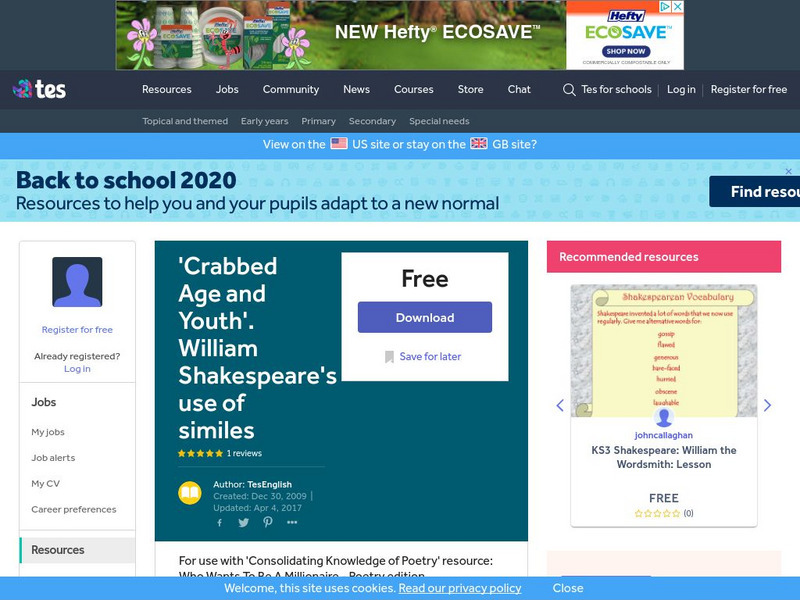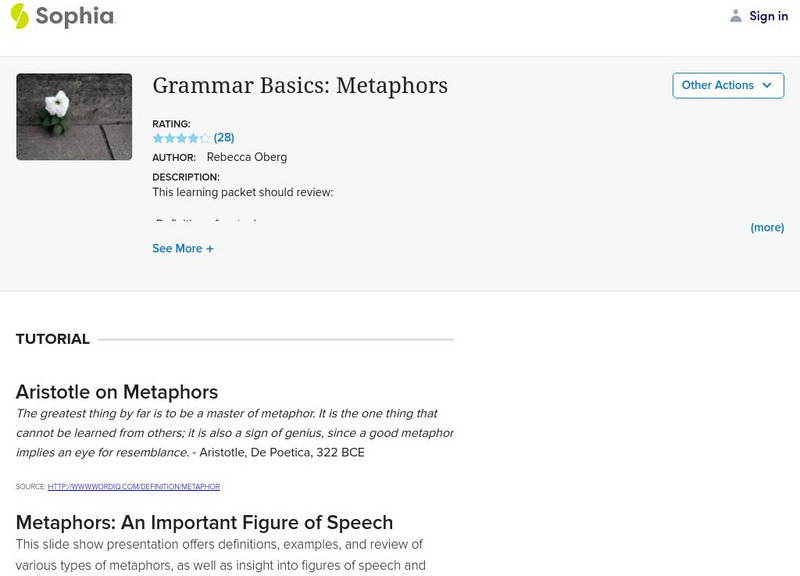Hi, what do you want to do?
CommonLit
Common Lit: "I Am Offering This Poem" by Jimmy Santiago Baca
A learning module that begins with "I Am Offering This Poem" by Jimmy Santiago Baca, accompanied by guided reading questions, assessment questions, and discussion questions. The text can be printed as a PDF or assigned online through...
Georgia Department of Education
Ga Virtual Learning: Anglo Saxon Poetry
This lesson focuses on Anglo-Saxon poetry including its elegiac tone, exile themes, and use of figurative language and poetic techniques like alliteration, caesura and kennings. It features links to three poems, each in at least two...
Texas Education Agency
Texas Gateway: How to Read and Analyze a Poem (English Iii Reading)
This lesson focuses on strategies for reading and analyzing a poetry. Reading poetry creates some interesting challenges because a poem uses lines and stanzas rather than paragraphs in order to create emotions and experiences. Figurative...
CommonLit
Common Lit: "We Wear the Mask" by Paul Laurence Dunbar
CommonLit.org is a wonderful resource to use in a Language Arts classroom. Each text is accompanied by guided reading questions, assessment questions, and discussion questions. In addition, students can click on words to see the...
CommonLit
Common Lit: "What Love Isn't" by Yrsa Daley Ward
CommonLit.org is a wonderful resource to use in a Language Arts classroom. Each story or article is accompanied by guided reading questions, assessment questions, and discussion questions. In addition, students can click on words to see...
Texas Education Agency
Texas Gateway: Literary Text: Close Reading of Poetry: Practice 3
This lesson will help you comprehend the poet's meaning by giving you practice in finding imagery, metaphors, symbolism, and allusions.
Read Works
Read Works: 4th Grade Lesson: Similes and Metaphors
[Free Registration/Login Required] A lesson in which students use the book Poetry for Young People: Langston Hughes edited by David Roessel and Arnold Rampersad to learn to identify and understand the use of simile and metaphor in...
Writing Fix
Writing Fix: Special Place Poems
In this lesson students will develop a poem while thinking about a special place. They will develop their ideas using strong word choice and figurative language. After the students have completed their ideas, they will be linked together...
Writing Fix
Writing Fix: Start and Stop Poetry
In this lesson students will analyze the cyclical patterns within poetry.
Other
The Figure 5 in Gold: Charles Demuth's Art & William Carlos Williams' Poem
The inspiration for Charles Demuth's painting was a poem entitled 'The Great Figure.' Learn about the connection between the artwork and the piece of literature.
Love To Know Media
Your Dictionary: Literary Terms Lesson Plan
This is a lesson plan for teaching the seven literary terms used in poetry: simile, metaphor, alliteration, imagery, hyperbole, personification, and onomatopoeia.
Writing Fix
Writing Fix: Colorful Sensory Poems
This lesson allows students to explore color - both in literal and figurative terms. Students will read books about color, discuss the emotion involved with color, and incorporate color metaphors to write poems using the graphic...
TES Global
Tes: Romeo & Juliet: Parent & Child Relationships
[Free Registration/Login Required] This extensive lesson focuses on the parent/child relationships in Romeo and Juliet and in Ben Jonson's poem "On My First Sonne." Several activities are provided to aid students in comparing the...
Chase Young, PhD
Dr. Chase Young, Ph D: Reader's Theater Script: The Poem "Simile" [Pdf]
A reader's theater script for "Simile", a poem, is provided on this script. Eleven character roles are needed in this performance.
Utah Education Network
Uen: Discovering Ourselves in Literature and Life
This lesson plan, provided by the International Society for Technology in Education (ISTE), encourages students to evaluate literature in a variety of multimedia formats and answer the question, "Who Am I?," Students are then asked to...
Georgia Department of Education
Ga Virtual Learning: Contemporary Literature: The Modern Poet: Sylvia Plath
This lesson focuses on Sylvia Plath, her poetry, and how to analyze a poem. It features links to her biography; three of her poems: "Morning Song," "Lady Lazarus," and "Daddy"; an analysis of "Daddy"; and a poem anlaysis rubric. Students...
Texas Education Agency
Texas Gateway: Paradox (English Iii Reading)
Source: Paradoxes, James Guppy, Flickr Paradox is a type of figurative language that A Handbook to Literature defines as "a statement that while seemingly contradictory or absurd may actually be well-founded or true." You will find...
PBS
Pbs Learning Media: Literary Elements and Techniques Collection
These animated shorts introduce or review literary elements and techniques like theme, setting, figurative language, characterization, and conflict. They can be used when students are just learning how to identify the most commonly used...
TES Global
Tes: 'Crabbed Age and Youth'. William Shakespeare's Use of Similes
[Free Registration/Login Required] This learning module contains a PowerPoint game that reviews literary and figurative elements that are present in poetry. Students will also analyze the William Shakespeare's poem, "Crabbed Age of...
E Reading Worksheets
E Reading Worksheets: Differentiated Reading Instruction Worksheets, Activities
A collection of differentiated reading activities are provided in this collection. Worksheets for the following reading topics are included: climax, story structure, elements of a story; fact and opinion; summarizing, narrative sequence;...
Sophia Learning
Sophia: Grammar Basics: Metaphors
Learn about similes and metaphors through this multimedia presentation. First view a slide show describing different types of metaphors as well as a simile. Then watch a video [3:13] showing similes and metaphors used in popular songs. A...
Read Works
Read Works: Wonderful Trees
[Free Registration/Login Required] A poem about trees by Arin Lapa. A question sheet is available to help students build skills in reading comprehension.
ArtsNow
Arts Now Learning: Moon Phaser [Pdf]
In this activity, 4th graders will study the moon for a period of one month and learn to identify each major moon phase. They will then describe the moon through poems, haikus, and similes.
Other
Kindergarten Works: 10 Activities for Describing 3 D Shapes in Kindergarten
Describing 3D shapes in Pre-K and Kindergarten is now an expectation as it is a key geometry standard. This resource contains 3D shapes activities and resources for practicing this standard. Included are chants, videos, games, poetry,...










